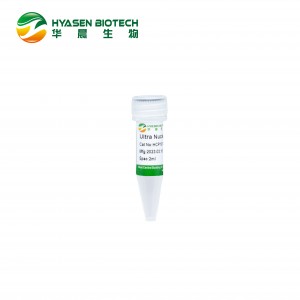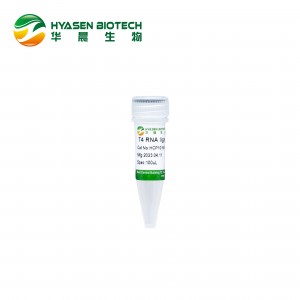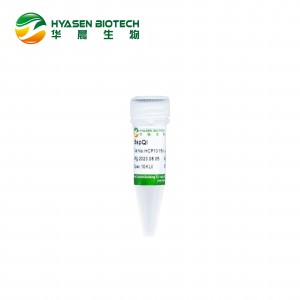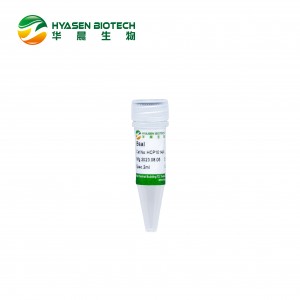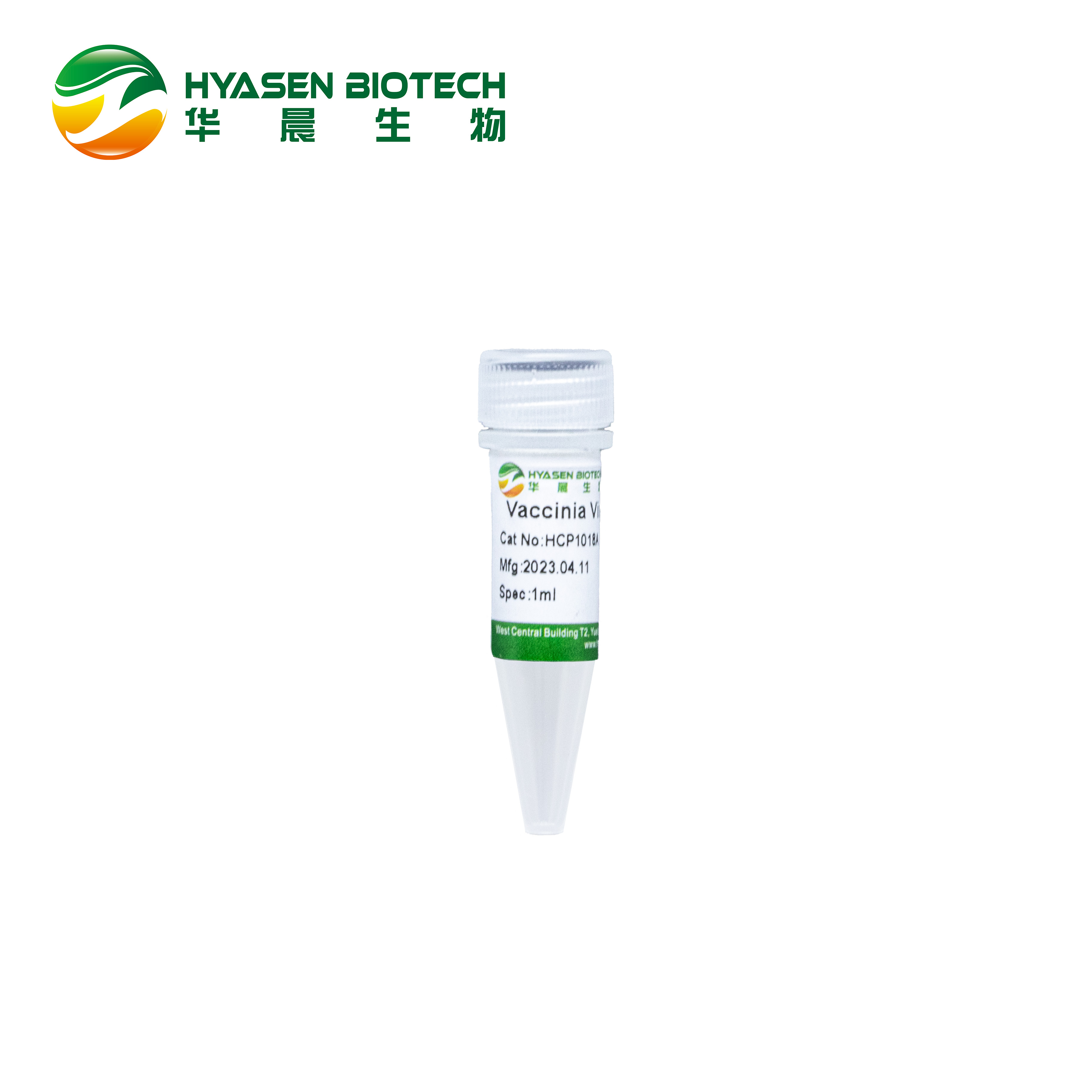
Vaccinia Virus Capping Enzyme
Vaccinia virus capping enzyme is derived from a recombinant E. coli strain carries the genes for the Vaccinia capping enzyme. This single enzyme is composed of two subunits (D1 and D12) and has three enzymatic activities (RNA triphosphatase and guanylyltransferase by the D1 subunit and guanine methyltransferase by the D12 subunit). Vaccinia virus Capping Enzyme is effective to catalyze the formation of cap structure, which can specifically attach the 7-methylguanylate cap structure (m7Gppp, Cap 0) to the 5′ end of RNA. Cap structure (Cap 0) plays an important role in mRNA stabilization, transport and translation in eukaryotes. Capping RNA by enzymatic reaction is an effective and simple method which can significantly improve the stability and translation of RNA for in vitro transcription, transfection, and microinjection.
Components
Vaccinia Virus Capping Enzyme (10 U/μL)
10×Capping Buffer
Storage conditions
-25~- 15℃ for storage ( Avoid repeated freeze-thaw cycles)
Storage buffer
20 mM Tris-HCl (pH 8.0), 100 mM NaCl,
1mM DTT, 0. 1mM EDTA, 0. 1% Triton X- 100, 50% glycerol.
Unit Definition
One unit of Vaccinia virus Capping Enzyme is defined as the amount of enzyme required to incorporate 10pmol of GTP into an 80nt transcript in 1 hour at 37°C.
Quality Control
Exonuclease: 10U of Vaccinia virus Capping Enzyme with 1μg λ-Hind III digest DNA at 37 ℃ for 16 hours yields no degradation as determined by agarose gel electrophoresis.
Endonuclease: 10U of Vaccinia virus Capping Enzyme with 1μg λDNA at 37℃ for 16 hours yields no degradation as determined by agarose gel electrophoresis.
Nickase: 10U of Vaccinia virus Capping Enzyme with 1 μg pBR322 at 37 ℃ for 16 hours yields no degradation as determined by agarose gel electrophoresis.
RNase: 10U of Vaccinia virus Capping Enzyme with 1.6μg MS2 RNA for 4 hours at 37℃ yields no degradation as determined by agarose gel electrophoresis.
1.coli DNA: 10U of Vaccinia virus Capping Enzyme is screened for the presence of E. coli genomic DNA using TaqMan qPCR with primers specific for the E. coli 16S rRNA locus. The E. coli genomic DNA contamination is≤1 E. coli genome.
2.Bacterial Endotoxin: LAL-test, according to Chinese Pharmacopoeia IV 2020 edition, gel limit test method, general rule (1143). Bacterial endotoxin content should be ≤10 EU/mg.
Reaction system and conditions
1. Capping Protocol (reaction volume: 20 μL)
This procedure is applicable to the capping reaction of 10μg RNA (≥100 nt) and it can be scaled up according to experimental demands.
I) Combine 10μg RNA and Nuclease-free H2O in a 1.5 ml microfuge tube to a final volume of 15.0 µL. *10×Capping Buffer: 0.5M Tris-HCl, 50 mM KCl, 10 mM MgCl2, 10 mM DTT, (25℃, pH 8.0)
2) Heat at 65℃ for 5 minutes followed by ice bath for 5 minutes.
3) Add the following components in the order specified
|
Component |
Volume |
|
Denatured RNA (≤10μg, length≥100 nt) |
15 μL |
|
10×Capping Buffer* |
2 μL |
|
GTP (10 mM) |
1 μL |
|
SAM (2 mM) |
1 μL |
|
Vaccinia virus Capping Enzyme (10U/μL) |
1 μL |
*10×Capping Buffer:0.5 M Tris-HCl, 50 mM KCl, 10 mM MgCl2, 10 mM DTT, (25℃, pH8.0)
4) Incubate at 37°C for 30 minutes, RNA is now capped and ready for downstream applications.
2. 5′ terminal labeling reaction (reaction volume: 20 μL)
This protocol is designed to label RNA containing a 5´ triphosphate and it can be scaled up according to demands. The efficiency of label incorporation will be impacted by the molar ratio of RNA: GTP, as well as the GTP content in RNA samples.
1) Combine appropriate amount of RNA and Nuclease-free H2O in a 1.5 ml microfuge tube to a final volume of 14.0 µL.
2) Heat at 65℃ for 5 minutes followed by ice bath for 5 minutes.
3)Add the following components in the order specified.
|
Component |
Volume |
|
Denatured RNA |
14 μL |
|
10×Capping Buffer |
2 μL |
|
GTP mix** |
2 μL |
|
SAM (2 mM) |
1 μL |
|
Vaccinia virus Capping Enzyme (10U/μL) |
1 μL |
** GTP MIX refers to GTP and a small number of markers. For the concentration of GTP, refer to Note 3.
4) Incubate at 37°C for 30 minutes, RNA 5′ end is now labeled and ready for downstream
Applications
1. Capping mRNA prior to translation assays/in vitro translation
2. Labeling 5´ end of mRNA
Notes on use
1.Heating the solution of RNA prior to incubation with the Vaccinia Capping Enzyme removes secondary structure on the 5´end of the transcript. Extend time to 60 minutes for transcripts with known highly structured 5´ends.
2. RNA used for capping reactions should be purified prior to use and suspended in nuclease-free water. EDTA should not be present and the solution should be free of salts.
3. For labeling the 5´ end, the total GTP concentration should be around 1-3 times the molar concentration of mRNA in the reaction.
4. The volume of the reaction system can be scaled up or down according to the actual.






